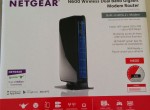 Having watched reports of Google’s Chromecast streaming dongle for the last 12 months or so, the idea of displaying what I can see on my PC on the TV screen is really appealing. There still seemed questions as to how well things really worked, but for the price I got one to try anyway.
Having watched reports of Google’s Chromecast streaming dongle for the last 12 months or so, the idea of displaying what I can see on my PC on the TV screen is really appealing. There still seemed questions as to how well things really worked, but for the price I got one to try anyway.
The Chromecast is available for $US35 and locally for $AU49 (I bought mine from Dick Smith).
After un-boxing the dongle it connects to your TV HDMI port and to a USB port or power block for power. Initial setup is fairly simple and done using your WiFi network, from there your laptop Chrome browser shows a new icon which lets you cast your laptop browser tab on to the TV screen, that worked pretty well.
On all our mobile devices the YouTube apps support the Chromecast and make YouTube clips much more accessible, including those we’ve made ourselves that previously seemed a bit of waste.
File Browser apps on mobiles let you “cast” movies using your mobile device as a remote control. If you have movies as mp4 files life is simple, but there is plenty of online information to help get other formats working.
Overall it is a good gadget with a few quirks to get used to. Your phone and the Chromecast need to be on the same wifi network and if you move away from the network, when you return the Chromecast is not automatically detected. The only way we’ve found to find the Chromecast on a mobile device is to restart the router. Whatever the Chromecast does when it loses its network connection and restarts makes it visible to the mobiles again. (Simply rebooting the Chromecast itself doesn’t help at all.)
Easily worth $50 just for YouTube video clips.
Update: More about routers – 30 Dec 2014
There are two WiFi routers on the network, one configured as an access point into the network over a EOP LAN connection. This is a Netgear WGT624 which the Chromecast connects through. To get anything to see the Chromecast connected to this segment requires the router to be rebooted and iPhones/iPads/Android/W7 PC will see it and work, sometimes after a couple of attempts. A cable connected laptop works just switching the TV on, but needs the router reboot to work via WiFi.
The primary router is a Billion BiPAC 7401VGP which has a wired W7 PC connected that sees the Chromecast with no problem all the time. Switch the TV on Chromecast is available on the desktop machine, connect the laptop via WiFi to this router and it too will see the Chromecast as the TV is switched on. The iPhone/Android phones connected to the segment don’t see the Chromecast.
Neither of these routers is on this list of routers known to work https://support.google.com/chromecast/table/3477832?hl=en-AU
The Netgear router has been on the replacement list for a while, so now the plan is to make sure its replacement is one from the “Known to work with Chromecast” list and see what happens then.
Update: Replaced my Netgear WGT624 with a new Netgear N600 – 6 Jan 2015

Comparing the “known to work” list with the devices MSY had available I replaced the old Netgear router with a new one and set it up as a WiFi access point. The Chromecast was reconfigured to connect to the new router and now everything just works. When the TV is switched on all of our mobile devices connected to the new router immediately see the Chromecast.
While the YouTube app is a favourite and mp4 movies work well, finding other apps with Chromecast support involves some searching around. With quite a library of mp3 music on the network it would be nice to find an app that played music well. Google’s own player wont play LAN files, some file browsers play the music but lack playlists and queuing etc.
 ability on your website if you aren’t using https:
ability on your website if you aren’t using https: Having watched reports of Google’s Chromecast streaming dongle for the last 12 months or so, the idea of displaying what I can see on my PC on the TV screen is really appealing. There still seemed questions as to how well things really worked, but for the price I got one to try anyway.
Having watched reports of Google’s Chromecast streaming dongle for the last 12 months or so, the idea of displaying what I can see on my PC on the TV screen is really appealing. There still seemed questions as to how well things really worked, but for the price I got one to try anyway.